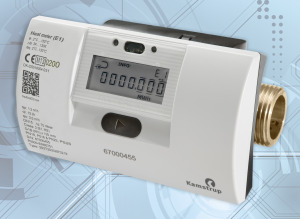Kamstrup has won the final round of tenders for 28,000 meters in Aarhus Municipality’s district heating project. With the intelligent reading system, Aarhus Municipality gets the world’s largest remotely read meter park for the monitoring of leaks and district heating operations. At the same time, Aarhus Municipality is supporting its vision of becoming CO2-neutral by 2030.
Aarhus Municipality has a clear green vision: it wants to be CO2-neutral by 2030. And this includes the district heating supply to the municipality’s approx. 320,000 residents. An objective of this size requires massive investments in the entire supply grid, including a new intelligent district heating system that can handle the renewable energy.
Aarhus Municipality has been occupied with installing Kamstrup’s district heating meters since 2012, and currently has half of the total 53,000 new heating meters in place. Kamstrup has now won the second round of tenders, which means the installation of the final 28,000 meters can get started in 2015.
“Aarhus Municipality has a very clear climate goal of becoming CO2-neutral by 2030. A supply grid, from where one can gather together data on energy, consumption and operations, will be of great benefit to efforts towards achieving the climate goal. In the longer term, an intelligent supply grid is also beneficial in making the energy supply more sustainable with more renewable energy,” says Kristian Würtz, executive council member for Technical Services & Environment at Aarhus Municipality.
Benefits to the economy and the environment
The system is expected to be completely installed in 2017, Kamstrup’s district heating solution will then reduce the daily water wastage in Aarhus Municipality by 125 cubic metres per 24 hours, corresponding to 45,625 cubic metres annually.
One major advantage of the system is that Aarhus’ Department of Waste and District Heating (‘AffaldVarme Aarhus’) will move over to automatic meter control and reading. Over time, consumers will therefore be spared service visits and having to read the meters themselves; in turn, the Department of Waste and District Heating will be spared the effort of having to make service calls to thousands of meters in order to carry out tests and replacements. In this way, Aarhus’ new district heating system will benefit not only the environment, but also the municipality’s economy.
“We get a metering and communication solution that will enable us to plan and monitor production down to the smallest detail. We will be notified of errors, leaks and cracks in the pipe system extremely quickly. This is of great benefit to a safe and sustainable operation,” explains head of department, Elsebeth Arendt from Aarhus’ Department of Waste and District Heating.
Kamstrup is the total contractor of the project from the delivery of the meters until the system is in operation, including hosting, support as well as the actual installation.
According to Kamstrup’s division director, Knud Bonde, Aarhus is a role model for all other cities and municipalities that wish to make an active contribution in the field of climate change.
“This project is State of the Art within the field of smart grids. We at Kamstrup are proud to be the backbone of one of the most visionary district heating grids in the world. In the future, many other international cities will look to Aarhus as a showcase for district heating, so the project will also help to strengthen Kamstrup’s position on the global heating market,” says Knud Bonde.




